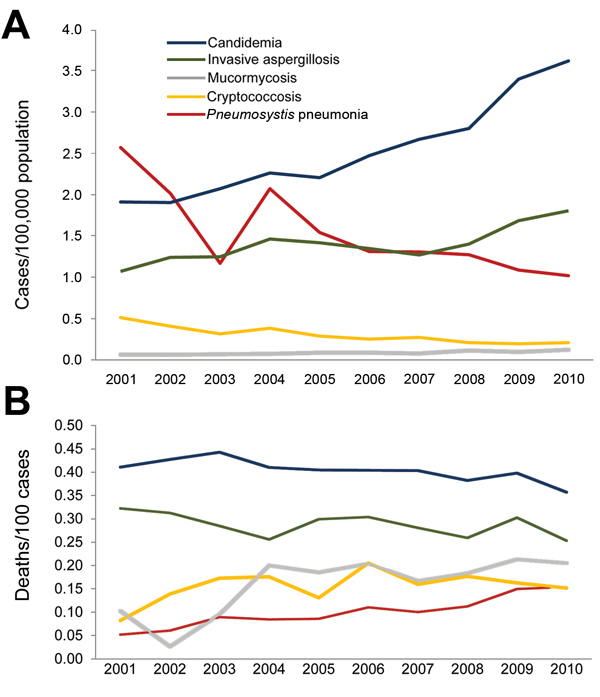Volume 20, Number 7—July 2014
Research
Population-Based Analysis of Invasive Fungal Infections, France, 2001–2010
Figure 1

Figure 1. A) Trends in the incidence of invasive fungal infections in France, 2001–2010The incidence increased (p<0.001) for candidemia, invasive aspergillosis, and mucormycosis, but decreased for cryptococcosis and pneumocystosis (Poisson's regression)B) Trends in the fatality rate by invasive fungal infections during 2001–2010Fatality rates decreased for candidemia (p<0.001) and invasive aspergillosis (p = 0.04), but increased for mucormycosis (p = 0.03), pneumocystosis (p<0.001), and cryptococcosis (p = 0.03).
1These authors contributed equally to this article.
2These authors contributed equally to this article.
Page created: June 17, 2014
Page updated: June 17, 2014
Page reviewed: June 17, 2014
The conclusions, findings, and opinions expressed by authors contributing to this journal do not necessarily reflect the official position of the U.S. Department of Health and Human Services, the Public Health Service, the Centers for Disease Control and Prevention, or the authors' affiliated institutions. Use of trade names is for identification only and does not imply endorsement by any of the groups named above.